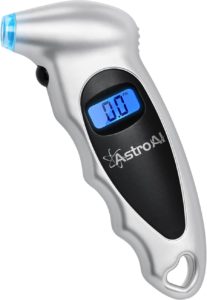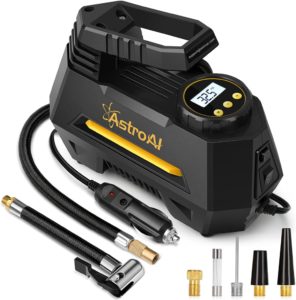The 2020 Honda Civic is a popular car model that comes with a tire pressure monitoring system (TPMS) to help drivers monitor their tire pressure. The TPMS is an essential safety feature that alerts drivers when the tire pressure is low, preventing potential accidents on the road. In this article, we will explore how the 2020 Honda Civic TPMS works and why it is important to maintain proper tire pressure.
How to Reset 2020 Honda Civic TPMS:
Make sure all tires are at the correct PSI.
With the vehicle running, select the INFO button on the steering wheel.
Scroll over and select SETTINGS.
Select TPMS CALIBRATION.
Select CALIBRATE.
To do a TPMS HARD RESET, follow this procedure 3 times.
The Basics of TPMS
What is TPMS?
TPMS is a system that monitors the air pressure inside the tires of a vehicle. It alerts the driver when the tire pressure is low, which can cause poor handling, reduced fuel economy, and potential tire damage.
How the 2020 Honda Civic TPMS Works
The Components
The 2020 Honda Civic TPMS consists of four tire pressure sensors, a TPMS control unit, and a dashboard indicator.
The Sensors
The tire pressure sensors are installed inside the tire valve stem and send data to the TPMS control unit. The sensors measure the tire pressure and temperature and transmit the information wirelessly to the control unit.
The TPMS Control Unit
The TPMS control unit receives data from the tire pressure sensors and compares it to the recommended tire pressure. If the pressure is below the recommended level, the control unit sends a signal to the dashboard indicator.
The Dashboard Indicator
The dashboard indicator is a warning light that illuminates when the tire pressure is low. The indicator is located on the dashboard and is typically yellow or red in color.
What to Do When the Dashboard Indicator Lights Up
When the dashboard indicator lights up, it means that at least one of the tires has low pressure. The driver should check the tire pressure and inflate the tire to the recommended level. The recommended tire pressure can be found in the owner’s manual or on a sticker located on the driver’s side door jamb. After adjusting the tire pressure to the correct levels, follow the reset procedure to turn the TPMS warning light off.
Common Causes for the Tire Pressure Light to Turn On:
Low tire pressure due to a puncture, leak, or gradual air loss
Change in ambient temperature, which can cause the tire pressure to drop
Improperly inflated spare tire if it contains a TPMS sensor
Faulty tire pressure sensor or control unit
Battery in the tire pressure sensor is dead or low
Damaged valve stem or valve core
Driving on underinflated or overinflated tires
Tires that are not properly seated on the rim
Incorrect tire size or type installed on the vehicle
Faulty or damaged wiring in the TPMS system between the receiver module and the on board computer.
When to Reset TPMS:
After rotating the tires or changing a tire
After replacing a tire pressure sensor
After replacing a wheel or tire
After adjusting the tire pressure to the recommended level
After performing any maintenance or repairs on the TPMS system
After repairing a punctured tire
After a TPMS warning light has been triggered and the issue has been resolved
When switching from winter tires to summer tires or vice versa.
Why Maintaining Proper Tire Pressure is Important
Safety
Maintaining proper tire pressure is essential for safety on the road. Low tire pressure can cause poor handling, reduced braking performance, and potential tire failure.
Fuel Economy
Proper tire pressure can improve fuel economy by reducing rolling resistance and increasing the tire’s contact patch with the road.
Tire Life
Maintaining proper tire pressure can extend the life of the tires by reducing wear and tear.
FAQ's
Q1. Can the TPMS be turned off?
A1. No, the TPMS cannot be turned off. It is a mandatory safety feature on all new vehicles.
Q2. How often should I check my tire pressure?
A2. You should check your tire pressure at least once a month and before long trips.
Q3. How accurate is the TPMS?
A3. The TPMS is generally accurate within a few pounds per square inch (PSI).
Q4. What happens if I ignore the TPMS warning?
A4. Ignoring the TPMS warning can lead to poor handling, reduced fuel economy, and potential tire failure.
Q5. Can I replace the tire pressure sensors myself?
It is recommended to have the tire pressure sensors replaced by a qualified mechanic or at a dealership. Replacing the sensors requires specialized tools and knowledge.
Q6. What should I do if the TPMS warning light stays on even after inflating the tires?
A6. If the TPMS warning light stays on even after inflating the tires, it could indicate a malfunction in the TPMS system. It is recommended to have the system checked by a qualified mechanic or at a dealership.
Q7. Can I drive with a TPMS warning light on?
A7. It is not recommended to drive with a TPMS warning light on. Low tire pressure can cause poor handling and potential tire failure, which can lead to accidents on the road.
Q8. What should I do if the TPMS warning light blinks?
A8. If the TPMS warning light blinks, it indicates a malfunction in the TPMS system. It is recommended to have the system checked by a qualified mechanic or at a dealership.
Q9. Can I use tire sealant with the TPMS system?
A9. It is not recommended to use tire sealant with the TPMS system. The sealant can damage the sensors and affect the accuracy of the system.
Q10. Does the TPMS system work in cold temperatures?
A10. Yes, the TPMS system works in cold temperatures. However, cold temperatures can cause the tire pressure to drop, which can trigger the TPMS warning light. It is important to maintain proper tire pressure, especially in cold weather.
Conclusion
The 2020 Honda Civic TPMS is a vital safety feature that helps drivers monitor their tire pressure. It consists of tire pressure sensors, a TPMS control unit, and a dashboard indicator. Maintaining proper tire pressure is essential for safety, fuel economy, and tire life.
Please note that this blog post contains Amazon affiliate links. This means that if you make a purchase through one of these links, the author of the blog may earn a small commission at no extra cost to you. The author only recommends products that they personally use and believe in. Thank you for supporting this blog.




